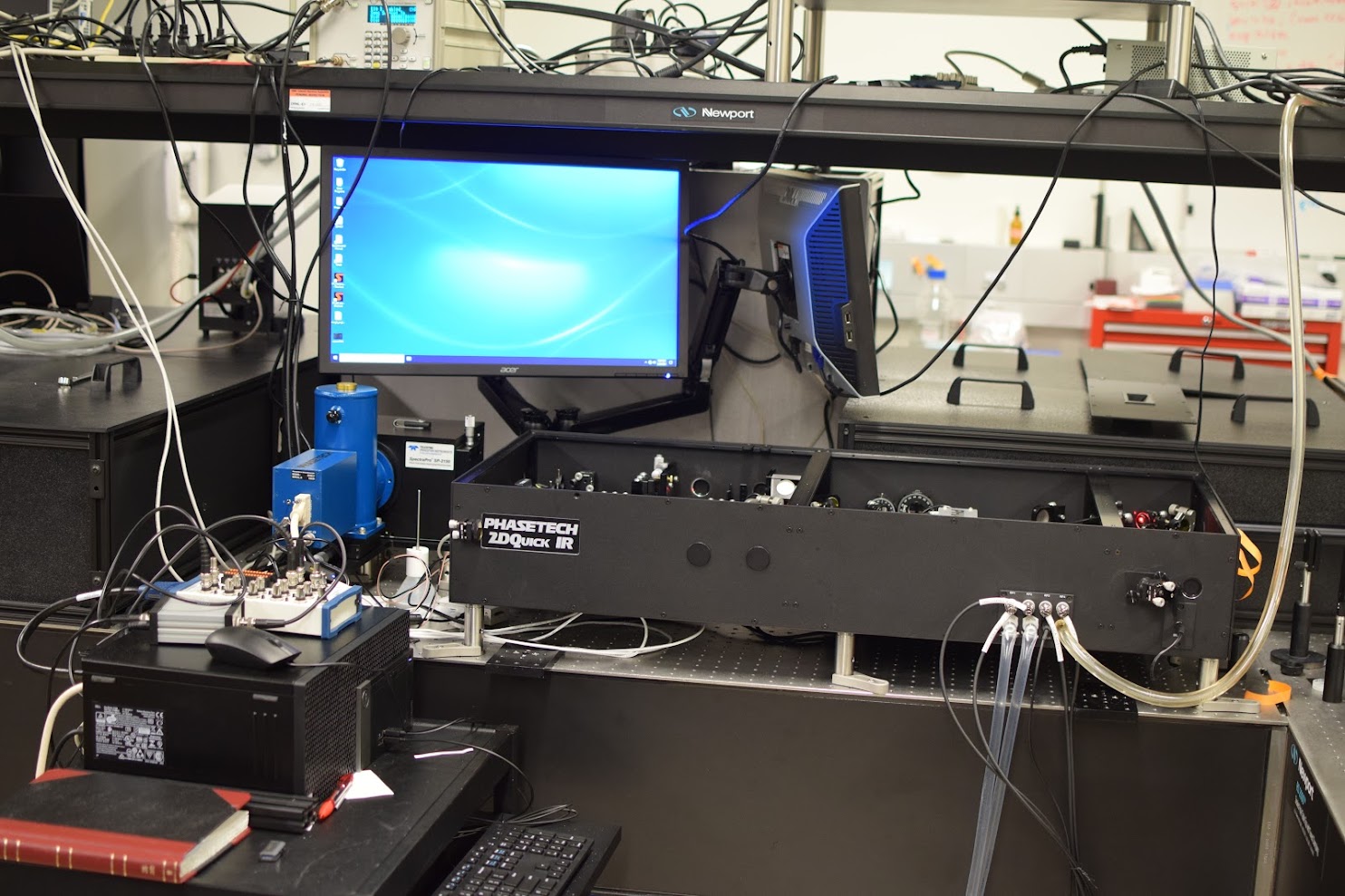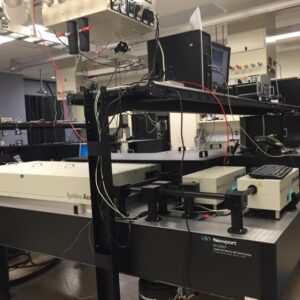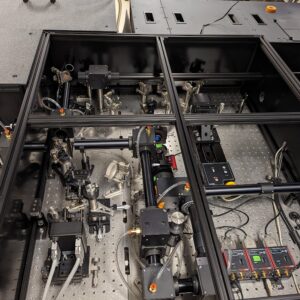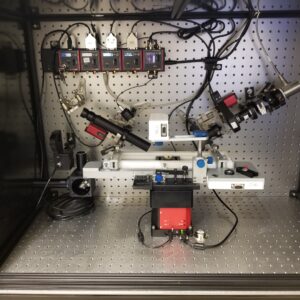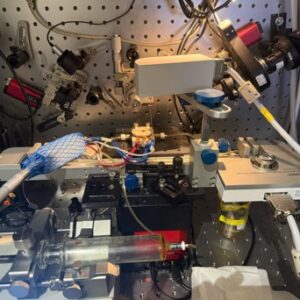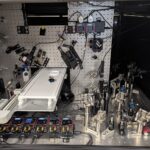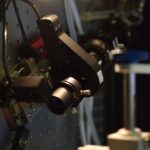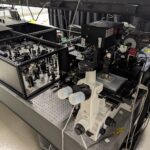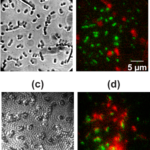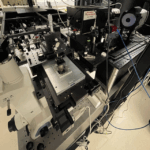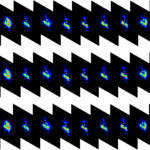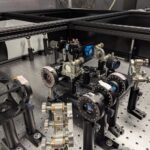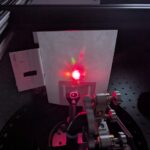Sum Frequency Generation Vibrational Spectroscopy
Our third-generation broadband vibrational sum-frequency generation (SFG) spectrometer combines advances made in previous generations by including pulse shaping technology, purged and enclosed beam paths, real time feedback and control using motorized stages and mounts to facilitate the study of complex interfaces evolving in time. The modular design allows for easy exchange of sample holders and environments (on the right), which include newly developed electrochemical cells, Langmuir troughs, liquid-solid flow cells and automated deposition in liquid-liquid sample environments. This is the workhorse instrument of our laboratory and is surprisingly user friendly. This work is sponsored by DOE-BES.
New in 2025: Ultra-Broadband Phase Resolved SFG
Our fourth-generation broadband vibrational sum-frequency generation (SFG) spectrometer combines the same advances made in our third-generation tool, while including automated frequency scanning across the mid-IR with heterodyne detection. The combination of the broad spectral content with phase sensitivity provide chemical insight into local interfacial electric fields, chemical speciation, and H-bonding that are difficult to probe in serial measurements. This work is sponsored by DOE-BES.
Widefield Nonlinear Microscopy (CARS, SHG, SFG, 2PF, etc.)
We have recently demonstrated a total internal reflection enabled nonlinear optical microscope capable of probing living samples in a chemically selective and spatio-temporally resolved manner. This allows us to perform optical imaging measurements including coherent anti-stokes Raman scattering (CARS), SFG, two-photon fluorescence (2PF) and sum-frequency/second-harmonic generation (SFG/SHG) microscopies on a wide range of systems. This work was sponsored by DOE-BER.
New in 2025: Optical Ptychography
Optical ptychography measurements provide insight into the amplitude and phase of light traversing highly scattering and dense media – we have developed a microscope capable of imaging large fields of view at the diffraction limit leveraging new reconstruction algorithms CS collaborations. This work is sponsored by the BRaVE initiative.
New in 2025: Pump-Probe Vibrational Sum Frequency Generation
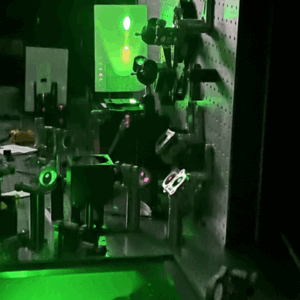
Using a recently acquired Solstice Ace femtosecond amplifier, we have developed a pump-probe SFG spectrometer to study ultrafast dynamics at interfaces in the context of chemical separations. These approaches provide insight into the mechanisms of phase transfer and ion exchange in systems far from equilibrium. This work is sponsored by DOE-BES.
New in 2025: Vibrational Sum Frequency Scattering
Vibrational sum frequency scattering (SFS) is used in our laboratory to probe the interfaces of nano- and microscopic sized particles, colloids, and assemblies. These small objects and chemical interactions taking place at their surfaces play an important yet poorly understood role in chemical separations. Biological and bio-mimetic systems are also studied here, where dynamics of molecules interacting with surfaces are of interest. These scattering approaches naturally synergize with neutron and x-ray scattering techniques. This work is sponsored by DOE-BES.
Two-Dimensional Infrared Spectroscopy
A Phasetech 2DQuick-IR spectrometer is used in our labs to study ultrafast dynamics in a range of molecular and nano-scale samples. We use this instrument to understand fundamental aspects of solvation and relaxation dynamics central to chemical selectivity in separations science, soft matter, and other applications.This work is sponsored by DOE-BES.
